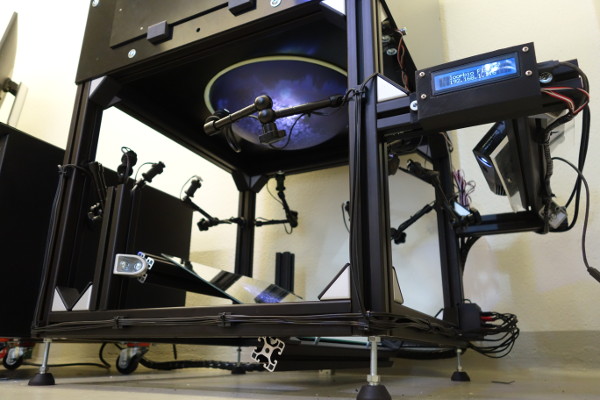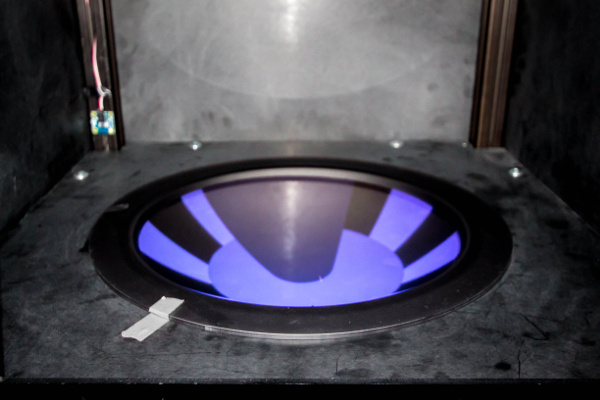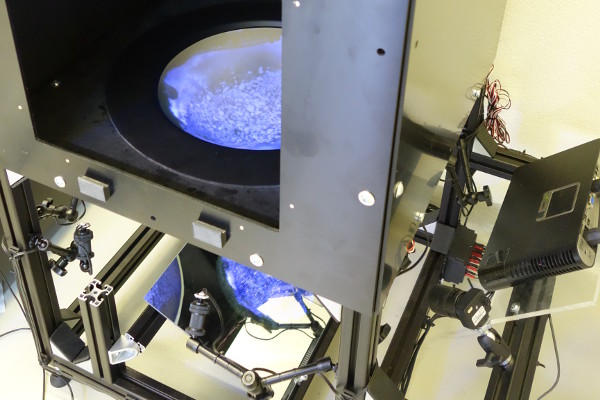
FishVR - Virtual Reality for Freely Swimming Zebrafish
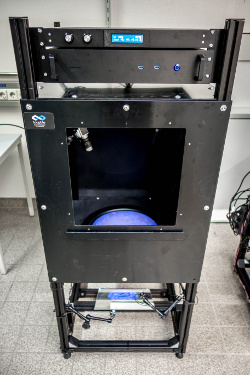
FishVR is an advanced visual virtual reality system for unrestrained fish. It allows immersing a fish into almost any 3D scene and studying its behavior. Experimental stimuli design is quick and easy, facilitated by industry standard 3D modeling software (Blender), while advanced experimental control is enabled using Python scripting. Using FishVR, you can go from conceiving an experiment, to design and testing, and to running it on real fish in only a few hours.
FishVR is based on the peer-reviewed technology described in two publications; Stowers et. al 2015, and Stowers and Hofbauer et. al 2017. FishVR's advanced 3D tracking and display technology allows projecting a panoramic virtual reality onto the whole fish tank surface under the water line. FishVR is not only the most advanced VR system but also the most advanced fish 3D tracking system available.
Contact us to request an evaluation system, a quote, or a personalized consultation to discuss your scientific needs.
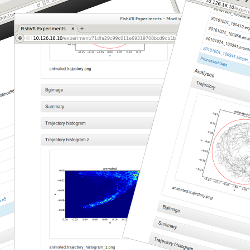 Virtual reality (VR) is a powerful tool for behavioral science. The ability to partially or
completely decouple the visual experience of the animal from its actual location allows
testing previously impossible paradigms. Meanwhile, the automated nature of the system
enables collecting considerable amounts of data in a short period of time.
Using VR, there is no longer any need to physically construct every experiment.
Virtual reality (VR) is a powerful tool for behavioral science. The ability to partially or
completely decouple the visual experience of the animal from its actual location allows
testing previously impossible paradigms. Meanwhile, the automated nature of the system
enables collecting considerable amounts of data in a short period of time.
Using VR, there is no longer any need to physically construct every experiment.
FishVR comes with several example experiments, giving you a wide variety of protocols to build upon, including: place preference, optomotor response (OMR, with a stripe drum), object avoidance and interaction with virtual conspecifics.
Designing a new VR experiment is as easy as modeling the virtual environment in Blender, defining the experimental logic in a simple text file, and uploading it with a few clicks to FishVR. The system also comes complete with a Python API for easy and precise control of more elaborated paradigms if required.
The whole system is controlled via a simple web interface. This allows you to start/stop the system, load and run experiments and look at a live preview of your data remotely (so as to not disturb the experiment or subject). There are no special computer skills required for running experiments, no software to install on your computer.
To design your own experimental paradigm, beginner skills in 3D modeling and Python are recommended but not necessary. With every system purchased we provide on-site training tailored to the needs and experience of your lab members.
FishVR Standard Package:
- FishVR hardware (computer, projector, mechanics, all included) and software
- On location installation, calibration and training
- Training and material for designing your own stimulus
- Advanced training for stimulus programming
- Training for data analysis and plotting using Python or R
FishVR System Specifications:
- System Dimensions ~650x650x1800mm (l,w,h)
- System Weight ~40Kg
- 3D tracking and VR projection with 120fps
- Bowl shaped arena with a volume of 4.2l (diameter at surface 320mm, depth max 90mm)
Possible Applications
Example Application: Studying the Optomotor Response
The Optomotor Response (OMR) is a well studied behavior present in many animals whereby when the world appears to rotate around the subject, a turn is elicited. In Zebrafish this is exemplified by the animals having the tendency to swim in the same directions as the striped pattern when it rotates around them (as shown in the video).
In this video, we demonstrate how to study the OMR in freely swimming Zebrafish using the FishVR system. The flexibility and ease of development of experiments in VR allows efficient testing of the parameter space of behavior, for example in this case by adjusting:
- Rotation speed and direction of the drum
- Color, brightness and contrast of the stripes and environment
- Stripe density and spatial frequency
As shown in the Video, the automated analysis and data processing of FishVR allows instant readouts of the experiment results including 'Occupancy', 'Swimming speed and distance', and 'Swimming depth'. In addition, the example data processing SDK allows further and more in-depth study of experiment specific parameters such as 'Bout frequency and bout distance', 'Main rotational axis' 'Coupling to stimulus (magnitude and phase lag)', and many more.
Example Application: Teleportation, testing a two-alternative forced choice paradigm
In addition to conventional neuroscience experiments (such as that shown in the previous video), FishVR enables novel experimental designs otherwise impossible without virtual reality. One such class of experiments are those making use of teleportation to transport the animal from one virtual location to another.
In this experiment, by swimming close to one of two posts the fish can change the virtual environment in which it swims. The alternatives are naturalistic (pebble like background) and artificial (chessboard background). The posts are always linked to the same environment. One can then measure the fish 'preference' and 'decisions' as it enters one post to be teleported to the connected virtual environment.
 loopbio
loopbio

